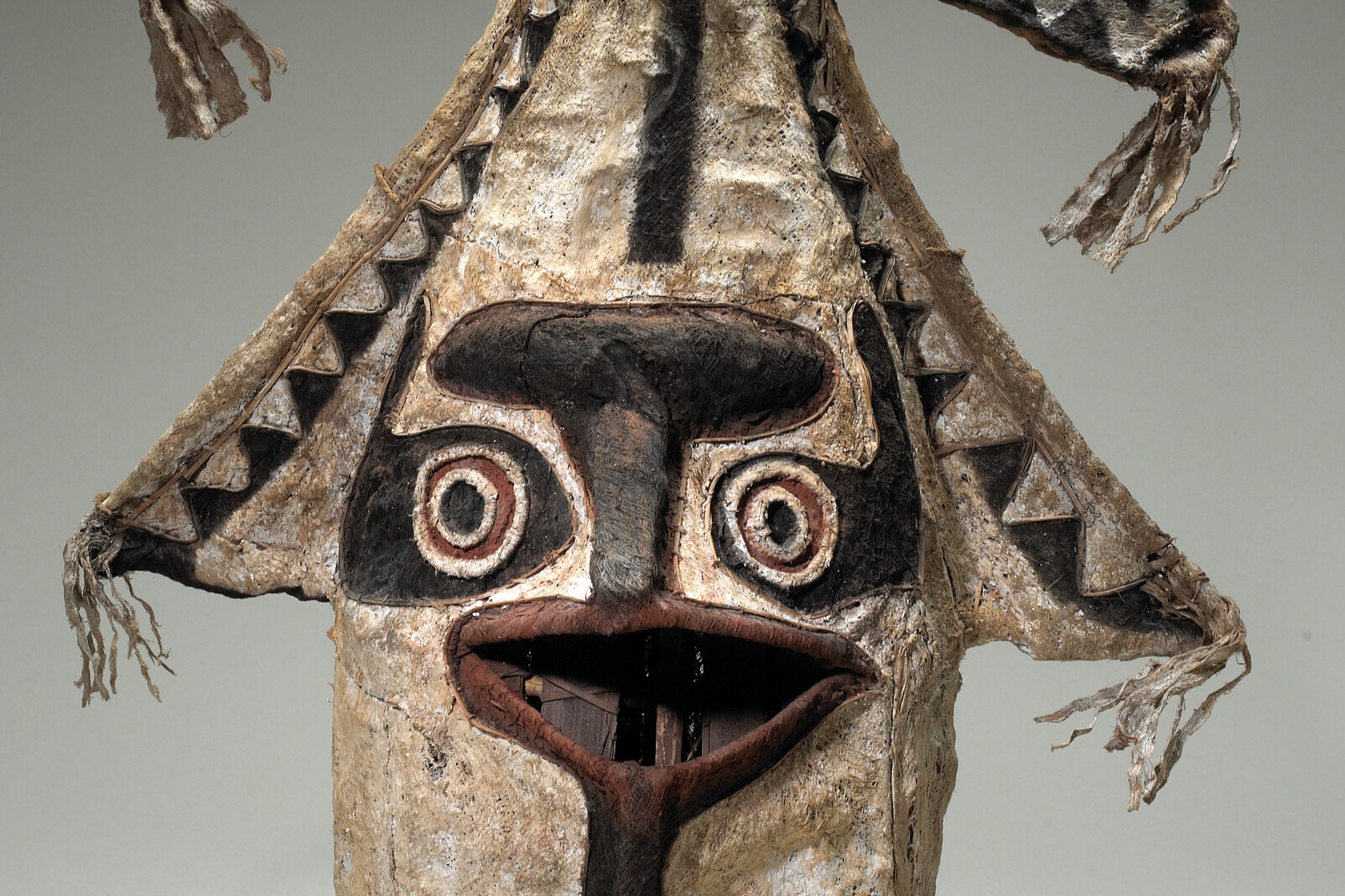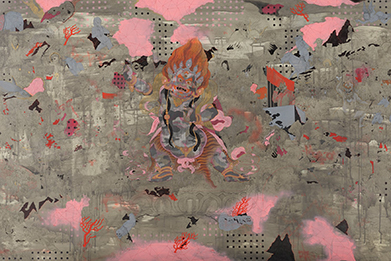
Asian American and Pacific Islander Artists
Celebrate the exceptional historical and contemporary creative achievements of Asian American and Pacific Islander artists with videos, stories, and more. With one of the nation’s most comprehensive collections of the arts of Asia, Mia is a vibrant resource for the appreciation of Asian cultural heritage, both past and present.
Now on View
Transcendent Clay: The Kondō Family’s Path of Porcelain Innovations
March 1–September 7, 2025
Spanning almost a century of creativity, “Transcendent Clay” offers a panoramic look at the achievements of the Kondō family of ceramicists based in Kyoto, Japan. The legacy of porcelain-making began with Kondō Yūzō (1902–1985) in the 1930s and continued with his sons Yutaka (1932–1983) and Hiroshi (1936–2012), who broke free to pursue original, individual expressions. Ultimately it was the grandson Takahiro (born 1958) who emerged as the family’s greatest innovator by developing the secret technique of applying a “silver mist” (gintekisai) of metallic droplets to his modern forms.
Hokusai | Monet
February 8–August 10, 2025
In 1897, the French painter Claude Monet made four paintings of the chrysanthemums in his garden in Giverny, capturing them not in a vase but en plein air—painting the flowers as they grew. He had been an avid collector of Japanese prints since the 1870s, and his unexpected, expressive use of space in this experiment recalls the Large Flowers series of prints made between 1833 and 1834 by Katsushika Hokusai. This exhibition brings the Large Flowers and Chrysanthemums series into conversation, exploring the symbiotic artistic connections between Japan and France in the 19th century.
And More by More They Dream Their Sleep: Mezzotints by Yōzō Hamaguchi
November 27, 2024–July 20, 2025
Yōzō Hamaguchi (1909–2000) was a master of color mezzotints, a technique that allowed printmakers to reproduce complex details of an artwork. Photography had rendered it obsolete by the 1900s, but Hamaguchi revived the technique after encountering it during a stay in Paris in the 1930s. There, he met American poet e.e. cummings, who gifted him a tool to achieve the signature tones in mezzotint. In the 1980s, Hamaguchi paid homage to the poet with the “e.e. cummings suite” of prints titled with lines from the poem “anyone lived in a pretty how town.”
From the Divine to the Mortal: Storytelling in Chinese Painting
October 26, 2024–October 19, 2025
The narrative painting genre has been popular in Chinese art since the Han dynasty nearly 2,000 years ago. The subjects of these paintings vary widely, from mythology and classic literature to history and political satire. For centuries, the most popular subjects were transcendent scenes evoking Buddhist and Taoist doctrines. Over time, many artists shifted their focus to the more mundane world—scenes of scholar-officials and ordinary people going about their lives.
Catch of the Day: Humans and Marine Animals in Japan
October 12, 2024–July 27, 2025
Living on an archipelago, surrounded by water on all sides, the Japanese have always had a close relationship with the sea. The marine life depicted in Japanese art, however, is often more symbolic than real, meant to convey literary, visual, or seasonal associations. Sometimes, even the connections to the sea are abstract, such as geometric patterns meant to evoke fishnets or scales on dishes and clothing. This exhibition explores the sea creatures that permeate Japanese art and culture, and dives into their deeper meaning.
Tibetan Buddhist Shrine Room: The Alice S. Kandell Collection
September 14, 2024–September 14, 2025
“Tibetan Buddhist Shrine Room: The Alice S. Kandell Collection” includes more than 200 gilt-bronze sculptures, paintings, silk hangings, and carpets that were created in Tibet between the 1300s and early 1900s. Buddhist ritual objects are displayed in the context of an elaborate private household shrine, a space used for offerings, devotional prayer, rituals, and contemplation.
Explore the Art
Explore
Explore artwork by Asian, Asian American, and Pacific Islander artists in Mia’s collection.
Podcasts
The Object podcast explores the surprising, true stories behind museum objects with wit and curiosity. An object’s view of us. Hosted by Tim Gihring, produced by Mia.
The Ghost of Hokusai
Finding Buddha: The Collector at the Top of the World
Fire and Rain: The Dragons Next Door
Past Exhibitions
The Shape of Time: Korean Art after 1989
March 23–June 23, 2024
This exhibition features the first generation of artists of Korean descent to experience the new freedoms and rapid changes ushered in by democracy. Born between 1960 and 1986, they came of age in a time of transition, their work filtered through the collective memory of authoritarian rule in South Korea.
The Root Collection: Living with Japanese Ceramics
August 19, 2023–May 12, 2024
This exhibition, in the Japanese galleries, presents a selection of tea bowls and other tea ware, standing and hanging vases, as well as sculpture. The Roots did not venture into Japanese ceramics until 2001, when they acquired the first of almost 50 tea bowls. The collection eventually encompassed 168 works, dominated by functional ware.
Eternal Offerings: Chinese Ritual Bronzes
March 4–May 21, 2023
Featuring some 150 Chinese bronze objects from Mia’s collection, “Eternal Offerings” offers an immersive experience designed to evoke the mystery of heavenly and ancestral worship. Each gallery embodies a facet of the rituals enacted to honor the divinities, from the solemnity of the temple, to the intoxication of lavish banquets.
The Art of Literacy in Early Modern Japan
March 25–August 6, 2023
Reading and writing were popular pastimes in early modern Japan. From the 1600s to the 1800s, the printing industry developed rapidly, making printed materials available to readers in urban and rural areas alike. This exhibition considers two forms of literacy, textual and visual, that enabled people to participate in a burgeoning public life.
Azechi Umetarō: Call of the Mountains
April 22, 2023–January 21, 2024
Azechi Umetarō (1902–1999) loved the mountains. As he grew older, he often hiked mid-sized mountains alone; they gave him an opportunity to meditate on life. The simplified figures of the bearded mountain men (yama-otoko), who reappear throughout his work, embody his love and appreciation for the environment.
Fukuda Kodōjin: Japan’s Great Poet and Landscape Artist
April 22–July 23, 2023
Fukuda Kodōjin (1865–1944) was one of a handful of scholar-artists who continued the tradition of Japanese literati painting (nanga) after 1900. Kodōjin’s painting style is characterized by bizarrely shaped mountain forms rendered in vivid color or monochromatic ink that often include a solitary scholar enjoying the expansive beauty of nature.
Program Videos
Watch videos about Asian American and Pacific Islander artists, including Tiffany Chung, Noriko Furunishi, Pao Her, Sieng Lee, Wing Young Huie, Chamindika Wanduragala, and Marcus Young
Self-Care Through Art
Close Looking and Drawing Exercise
During these challenging and uncertain times, empathy and compassion are crucial as we care for others. And self-care is just as important. Art can be a powerful tool for helping us connect with and mediate our own emotions and feelings. Here you can engage in close looking and a drawing exercise inspired by a painting from Mia’s collection by Yayoi Kusama. Also, be inspired by optimistic words of hope from the artist herself about the Covid19 pandemic and resilience.
Arts of Asia
Whether you’re teaching in a new virtual environment or from your classroom, we’ve got you covered with resources designed to support the integration of Asian art and voices into your curriculum.
Virtual Care Package
Send this digital “Care Package” to someone in need of support, inspiration, healing, or creativity. Co-curated with members of the local Asian American Pacific Islander community, this virtual care package includes poetry, films, workshop, and more.

















